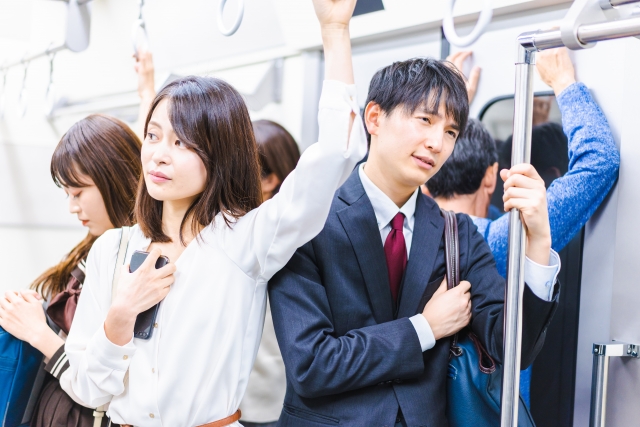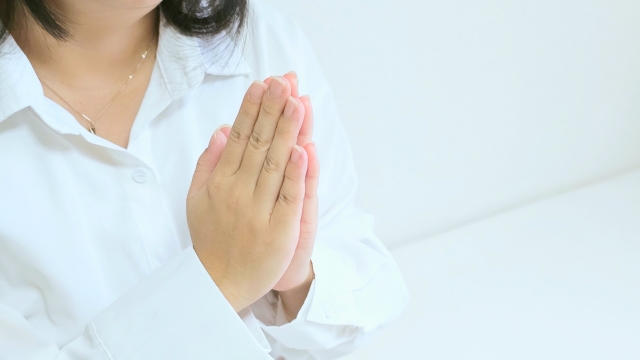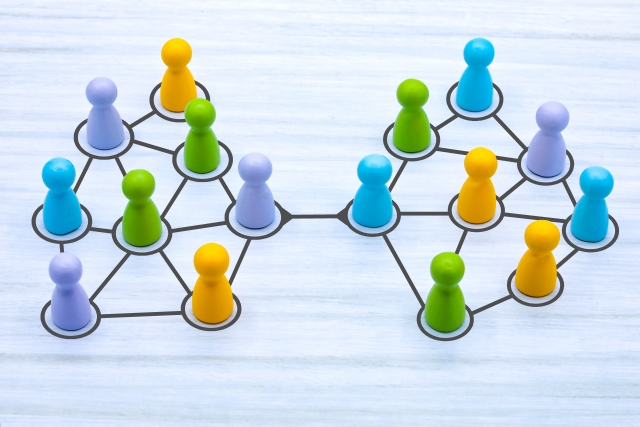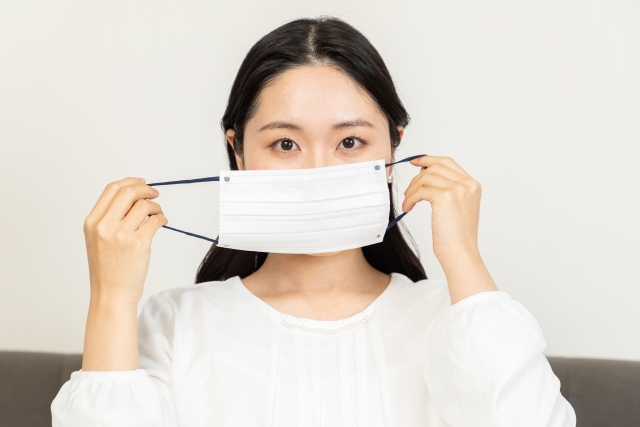
INDEX
Japan's concept of "wa" (harmony) extends far beyond simple politeness—it's a fundamental cultural value that shapes everything from daily interactions to corporate decision-making. This deeply ingrained principle emphasizes consideration for others, group cohesion, and maintaining peaceful relationships, often at the expense of individual desires.
While this harmony-centered approach creates a society known for its cooperation, politeness, and ability to share limited resources efficiently, it also presents unique challenges in today's rapidly changing world. The same cultural traits that produce beautiful examples of consideration—like giving up seats on trains or expressing frequent gratitude—can sometimes suppress innovation, delay addressing problems, and create uncomfortable conformity pressure.
In this blog, we'll explore concrete examples of "wa" in action, examine its historical foundations, and consider how modern Japan is navigating the balance between traditional harmony and emerging individualism. As someone who has experienced both Japanese culture and life abroad, I'll share personal reflections on finding equilibrium between these seemingly opposing values.
What is Japanese Harmony (Wa/和)?
Japanese people place great importance on "wa" (harmony). This concept is a core value in Japanese culture, manifesting in everything from daily life to social structures.
"Wa" begins with consideration for others. It signifies thoughtfulness, care for others, and valuing mutual relationships. Rather than prioritizing one's own desires or opinions, maintaining harmony with one's surroundings is emphasized.
Japanese society tends to prioritize the group over the individual. The spirit of "wa" sometimes includes a sense of self-sacrifice to maintain overall harmony. For example, in workplaces, team success takes precedence over individual gain, and in society at large, social order may be valued above individual freedom.
The development of this harmony-centered culture stems from Japan's geographical and historical factors. As an island nation with a relatively closed environment, people needed to share limited resources. Additionally, in traditional village communities, group solidarity was directly linked to survival, making it essential to avoid conflict and promote cooperation.
"Wa" is not merely peace or harmony but a profound cultural value that shapes Japanese identity and social structure.
Benefits and Drawbacks of Japanese People Valuing "Wa" (Harmony)
In Japanese culture, "wa" transcends the simple concept of harmony and functions as a core value that forms the foundation of society, deeply connected to Japanese identity. This emphasis on harmony has clear advantages and disadvantages.
Advantages of "Wa"
Japanese society tends to seek optimal solutions for the entire group rather than individual benefits. This allows for efficient distribution of limited resources and harmonious development of society as a whole. In company organizations and local communities, a cooperative atmosphere naturally emerges, enabling solidarity toward common goals.
This spirit of cooperation leads to improved efficiency in the long term. Actions that might harm the collective good are suppressed, resulting in optimal resource allocation. For example, Japan's manufacturing quality control and "kaizen" (continuous improvement) culture emerged from a team-based approach to problem-solving.
Good manners in public spaces are also a product of the harmony culture. Quiet behavior in crowded trains and cleanliness in public areas stem naturally from consideration for others.
The uniquely Japanese ability to "read the air" (understand unspoken social cues) is a significant strength. This ability to determine appropriate responses from context without explicit requests contributes to smooth communication and relationship building. The attitude of avoiding putting others down or hurting them also enhances social stability.
Disadvantages of "Wa"
However, excessive emphasis on harmony presents challenges. As criticized in terms of "peer pressure," different opinions and new ideas may be suppressed, creating an environment where discussions from diverse perspectives struggle to deepen. This can lead to missed opportunities for innovation.
The tendency to dislike individuals who stand out, symbolized by the saying "the nail that sticks out gets hammered down," is also problematic. Exceptionally talented individuals may not be properly evaluated, and individuality and creativity may not be fully expressed. In today's intensifying global competition, this can become a weakness for Japanese society.
Additionally, there's a tendency to maintain superficial harmony by avoiding direct confrontation with problems and concealing failures or mistakes. This undermines organizational transparency and hinders true problem-solving and improvement. In past corporate scandals, this culture of prioritizing "wa" has often delayed early detection and resolution of problems.
For Japanese society to continue developing, a flexible sense of balance is required—maintaining the positive aspects of the harmony spirit while minimizing its negative effects. In today's rapidly changing global society, balancing harmony with individuality, and cooperation with innovation, has become a crucial challenge that will determine Japan's future.
Concrete Examples of Japanese "Wa" (Harmony) and Their Underlying Reasons
Let me introduce how the Japanese emphasis on "wa" creates specific behavioral patterns and the uniquely Japanese thinking behind these practices.
1. Practicing Consideration: Giving Up Seats on Public Transportation

On crowded trains, young office workers immediately stand up and offer their seats to elderly people or pregnant women with a polite "please" gesture. While this behavior is encouraged by station announcements and signs, many Japanese do this voluntarily.
This action reflects the spirit of "wa" through consideration for socially vulnerable individuals. Even if it means temporary personal inconvenience, prioritizing those in greater need maintains social harmony. This behavior is also influenced by reciprocal thinking ("I too will become elderly someday") and the fundamental Japanese value of "not causing trouble to others." There's also an expectation that such acts will inspire other passengers, creating a chain reaction of thoughtfulness.
2. Emphasis on Consensus: Participatory Decision-Making Processes

In important company decisions, managers carefully listen to everyone's opinions, respecting even opposing views during discussions. Before final decisions, "nemawashi" (groundwork) takes place, providing opportunities for all stakeholders to share information and exchange views. Even after decisions are made, adjustments may be made to accommodate those who had opposing opinions.
Japanese people value this decision-making process because it prioritizes universal acceptance and harmony over simple majority rule. They value unity over confrontation and division, seeking solutions that satisfy everyone even if it takes more time. This stems from the value of "harmony is to be valued" ("wa wo motte tōtoshi to nasu"), cultivated through history of coexistence in the limited space of an island nation. There are also strategic considerations to ensure smooth cooperation during implementation phases.
3. Relationship Lubricant: Daily Expressions of Gratitude and Apology

Japanese people frequently use phrases like "thank you" and "I'm sorry" in daily conversations—when ordering at restaurants, when servers bring food, before speaking in meetings, when taking someone's time, and many other contexts. Sometimes gratitude and apology are expressed simultaneously.
These frequent expressions of gratitude and apology function as social lubricants. Japanese people verbally demonstrate respect for others and awareness of their own impact to maintain harmonious relationships. "Thank you" acknowledges others' contributions, while "I'm sorry" recognizes the burden placed on others. These words aren't merely formalities but essential elements of "wa" culture that acknowledge interdependence and respect for each other's roles.
4. Pursuit of Fairness: Prioritizing Organizational Benefits in Distribution

In Japanese companies, bonuses are often distributed to all employees in good performance years. Recognition and rewards extend beyond successful specific teams to related departments. Company welfare benefits and training programs are typically designed to be accessible to all employees rather than just select individuals.
Japanese people emphasize fair distribution based on viewing organizations as "communities sharing the same fate." This reflects values that prioritize organizational harmony and stability over individual outstanding success. By distributing benefits in ways acceptable to everyone, the goal is to prevent jealousy and conflict within teams and maintain long-term cooperative relationships. This relates to the cultural background of agricultural societies where people helped each other survive with limited resources.
5. Surface Agreement vs. True Feelings: Expressing Dissatisfaction After Meetings

During company meetings, when a supervisor presents a new project or policy, participants rarely voice opposing opinions publicly even when there are obvious problems or questions. On the surface, everyone appears to agree. However, after the meeting ends, real dissatisfaction emerges in hallways, smoking areas, or at drinking gatherings with comments like "that proposal is unrealistic" or "implementation will be difficult."
Japanese people behave this way to avoid public confrontation and damaging a superior's "face" (reputation). Direct opposition is believed to disrupt harmony and potentially damage relationships. There's also resistance to standing out in a group and fear of being labeled as "someone who can't read the room." While this behavior maintains surface harmony, it often delays addressing real problems.
6. Restraint and Consideration: The "Anything is Fine" Culture of Deferring Decisions

When deciding on restaurant choices with friends or family weekend activities, when asked "Where do you want to go?" or "What do you want to do?", Japanese people often respond with "Anything is fine," "I'll leave it to you," or "Wherever you'd like to go." Sometimes they do this even when they actually have preferences.
This behavior reflects consideration for not wanting to restrict others with one's own opinions. Respecting others' wishes without imposing one's own preferences demonstrates Japanese-style thoughtfulness. There's also psychology at work to avoid potential conflict from clearly stating one's opinion. Additionally, there's a self-sacrificial thinking that "making others happy by suppressing my own desires" is virtuous, along with an expectation that "even without directly expressing my true feelings, others should be able to sense them."
7. Adherence to Collective Social Norms: Mask-Wearing Behavior During Emergencies

During the coronavirus pandemic, almost everyone in Japan wore masks in public places even without legal mandates. People voluntarily wore masks on trains, buses, commercial facilities, and workplaces, with unmasked individuals being rare. This behavior began before government requests and continued after other countries relaxed their regulations.
Japanese people act this way due to strong awareness of the social norm "don't cause trouble for others." They act from a sense of responsibility to protect those around them by reducing their own potential as infection sources. Group consciousness of "doing what everyone else is doing" and concerns about being viewed negatively for not wearing a mask are also significant factors. Additionally, cultural background influences this behavior, as mask-wearing was already common historically for preventing hay fever and colds.
8. Uniformity Creating Belonging: Dress Code Consistency Within Groups

In Japanese companies, particularly for sales roles or financial institutions, men typically wear uniform navy or black suits with white shirts and conservative ties. Women similarly favor standard styles with subdued-colored suits and blouses. Even in schools without uniforms, students tend to choose similar clothing, hairstyles, and bags, with very individualistic fashion choices potentially making one stand out uncomfortably.
Behind this uniform dress choice lies an emphasis on group belonging and harmony. Wearing similar clothing strengthens solidarity and the feeling that "we are members of the same team," fostering organizational unity. Avoiding standing out through clothing reflects a desire to be evaluated on ability and performance rather than appearance, along with values that prioritize inner qualities over external appearance. There's also a practical aspect: saving time and energy on clothing decisions allows greater focus on work or studies.
Resistance to Forced "Wa" and Peer Pressure: The Rise of Individualism
The concept of "wa" (harmony) has long been considered a virtue in Japanese society, but in recent years, critical views and resistance toward it have increased. Particularly among younger generations, there's growing skepticism about excessive peer pressure and a stronger emphasis on respecting individual values.
Traditionally, Japanese society was dominated by the idea that "the nail that sticks out gets hammered down." People were expected to suppress their individuality and behave like those around them to avoid disrupting group harmony. However, with globalization and the spread of the internet providing more exposure to diverse values, questions about this conformity pressure have emerged.
The culture of "reading the air" (understanding unspoken social cues) is also being reevaluated. Previously praised as the ability to sense others' feelings, it's now sometimes criticized as functioning as a means to suppress individualistic expression and behavior through labeling people as "KY" (unable to read the air).
Changes are also visible in corporate culture. Traditional Japanese management characteristics like lifetime employment and seniority-based systems are fading, with greater emphasis placed on evaluations based on individual abilities and results. Many young employees question conventional implicit communication methods like "nemawashi" (behind-the-scenes consensus building) and "nominication" (communication through drinking parties), preferring more transparent and direct expression of intentions.
In education, reforms promoting "zest for living" and "diversity" are advancing, shifting from standardized education to nurturing individuality. Along with the spread of social media, the importance of self-expression and voicing personal opinions is increasingly recognized.
On the other hand, there are concerns that this rising individualism could lead to social division and weaker solidarity. Many worry about losing the spirit of "consideration" and "mutual help" that has been a strength of Japanese society.
Modern Japan appears to be in a transitional period, seeking balance between traditional "wa" values and new individualism. The ideal may be creating a new form of "wa" that allows coexistence while recognizing diverse individualities, rather than formal harmony or peer pressure. This social transformation represents an important challenge for Japan.
My thoughts on Japanese harmony
As someone born and raised in Japan who received a Japanese education, I understand how the concept of "wa" (harmony) becomes ingrained in us from an early age.
This is precisely why I experienced many surprising differences during my year studying abroad in New Zealand and when traveling through various Asian and European countries.
In Japan, few people speak loudly on trains or buses to maintain collective harmony, and voices tend to lower even further in the evening. Additionally, there's a tendency to refrain from strongly opposing the opinions of those with higher status or age.
That's why when I went abroad and witnessed people of different ages engaging in discussions as equals, I felt a sense of envy and recognized a certain equality in those interactions.
It's true that in Japan, where "wa" is valued, we experience less daily irritation and can live peacefully without arguments or confrontations. Whenever I return to Japan from overseas, I often appreciate the wonderful aspects of Japan's peaceful and orderly lifestyle.
On the other hand, "wa" can lead to conformity pressure and frightening elements that exclude those who are "different." Having grown up in rural Japan myself, there were times when I negated aspects of myself that couldn't align with the behaviors or opinions of those around me when living within a limited community.
Finding balance—valuing harmony while appropriately pursuing improvements when something is wrong—can be challenging in Japanese society where conformity pressure is strong.
However, in this rapidly changing era and society, perhaps this is precisely the right opportunity for us Japanese people ourselves to seek change and evolve.

Author : Katsu
Born and raised in Japan. After traveling solo to various countries starting at age 20, I was shocked to discover how peculiar Japanese culture and thinking appeared from a global perspective. Now I find these differences fascinating and want to incorporate new cultural perspectives and ways of thinking.
RELATED ARTICLES
Got questions about how Japanese think, act, or some of Japan’s quirky cultural habits? No matter how big or small—drop your thoughts in the comments below!
